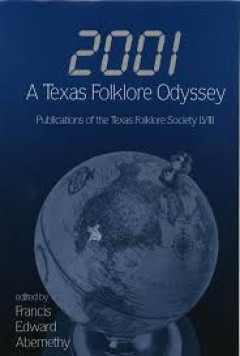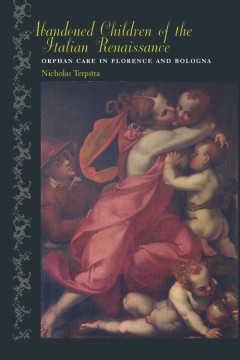Filter by

2001, a Texas Folklore Odyssey
This volume of the Publications of the Texas Folklore Society "contains a sample of the research that members of the Society were doing at the turn of the millennium as represented at the 1998, 1999, and 2000 meetings." The volume covers "a wide variety of contemporary and historical topics," including baby lore, stories about notable women, stories about food and cooking, information about the…
- Edition
- -
- ISBN/ISSN
- 9781574411409
- Collation
- -
- Series Title
- -
- Call Number
- -

1982 Uncovered: The Falklands War Mapping Project
War and its legacy are traumatic to individuals, communities, and landscapes. The impacts last long beyond the events themselves and shape lives and generations. Archaeology has a part to play in the recording of, and recovery from, such trauma. The Falklands War Mapping Project delivers the first intensive archaeological survey of the battlefields of the Falklands War. The project is pioneerin…
- Edition
- -
- ISBN/ISSN
- 9781803273822
- Collation
- -
- Series Title
- -
- Call Number
- -

1919 – The Year That Changed China: A New History of the New Culture Moveme…
The year 1919 changed Chinese culture radically, but in a way that completely took contemporaries by surprise. At the beginning of the year, even well-informed intellectuals did not anticipate that, for instance, baihua (aprecursor of the modern Chinese language), communism, Hu Shi and Chen Duxiu would become important and famous – all of which was very obvious to them at the end of the year.…
- Edition
- -
- ISBN/ISSN
- 9783110560718
- Collation
- -
- Series Title
- -
- Call Number
- -

8th EASN-CEAS Workshop on Manufacturing for Growth and Innovation
This Special Issue contains selected papers from works presented at the 8th EASN–CEAS (European Aeronautics Science Network–Council of European Aerospace Societies) Workshop on Manufacturing for Growth and Innovation, which was held in Glasgow, UK, 4–7 September 2018. About 150 participants contributed to a high-level scientific gathering providing some of the latest research results on t…
- Edition
- -
- ISBN/ISSN
- 9783039214860, 9783039214853
- Collation
- -
- Series Title
- -
- Call Number
- -

A Baronial Family in Medieval England: The Clares, 1217-1314
Originally published in 1965. In A Baronial Family in Medieval England: The Clares, 1217–1314, Michael Altschul studies the Clare family during the thirteenth century. The Clares spearheaded the struggle to enforce Magna Carta in the Barons' War. Historians prior to Altschul tended to neglect the Clares' history given the scattered nature of the archives documenting their time as a politicall…
- Edition
- -
- ISBN/ISSN
- 9781421436197
- Collation
- -
- Series Title
- -
- Call Number
- -

About Russia, Its Revolutions, Its Development and Its Present
The author analyzes modern Russian history from a new perspective. Due to the ideological heritage of the XIXth and XXth centuries, the social settings of the sociopolitical history of the USSR (1917–1945) have not been fully identified. Detailed examination of ideological and political concepts shows that the revolution of 1917 became not a middle class, proletarian movement, but rather a pl…
- Edition
- -
- ISBN/ISSN
- 9783653064735
- Collation
- oer.unej.ac.id
- Series Title
- Prager Schriften zur Zeitgeschichte und zum Zeitgeschehen,
- Call Number
- -

Abandoned Children of the Italian Renaissance Orphan Care in Florence and Bo…
In the early development of the modern Italian state, individual orphanages were a reflection of the intertwining of politics and charity.Nearly half of the children who lived in the cities of the late Italian Renaissance were under fifteen years of age. Grinding poverty, unstable families, and the death of a parent could make caring for these young children a burden. Many were abandoned, other…
- Edition
- -
- ISBN/ISSN
- 9781421429342
- Collation
- oer.unej.ac.id
- Series Title
- -
- Call Number
- -

A Biographical Bibliography: Explorers, Scientists & Visitors In the World's …
This is a very dull book. Like a dictionary, it contains only facts: facts that are not readily to be found elsewhere. People who are important in the study of caves and karst are known for what they did, what they wrote and whom they influenced. But as individuals they are often no more than a name. They may perhaps be recognized for other aspects, as a King perhaps, or a novelist or a famous …
- Edition
- -
- ISBN/ISSN
- 9789610504443
- Collation
- -
- Series Title
- -
- Call Number
- -

A Black Odyssey: John Lewis Waller and the Promise of American Life, 1878 -1900
This book focuses on the career of a single individual—an ambitious, resourceful Black American—and his efforts to realize personal fulfillment in a racist world.No Black American was more determined to realize the promise of American life following the Civil War, nor more frustrated by his inability to do so than John Lewis Waller. Waller, whose first twelve years were spent in slavery, ov…
- Edition
- -
- ISBN/ISSN
- 9780700631339
- Collation
- -
- Series Title
- -
- Call Number
- -

A Bowl for a Coin: A Commodity History of Japanese Tea
A Bowl for a Coin is the first book in any language to describe and analyze the history of all Japanese teas. To understand the triumph of the tea plant in Japan, Wayne Farris begins with its cultivation and goes on to describe the myriad ways in which the herb was processed into a palatable beverage. Along the way, he traces the shift in tea's status from exotic gift item from China to its com…
- Edition
- -
- ISBN/ISSN
- 9780824882617;9780824882624
- Collation
- -
- Series Title
- -
- Call Number
- -
 Computer Science, Information & General Works
Computer Science, Information & General Works  Philosophy & Psychology
Philosophy & Psychology  Religion
Religion  Social Sciences
Social Sciences  Language
Language  Pure Science
Pure Science  Applied Sciences
Applied Sciences  Art & Recreation
Art & Recreation  Literature
Literature  History & Geography
History & Geography